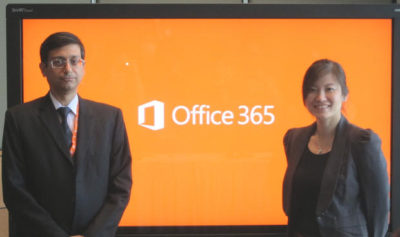Microsoft Office 2016 is now available for deployment in your enterprise. There are several options to choose from, but which one is right for you?

As of September 22, 2015, the official version for Microsoft’s productivity and collaboration suite has been upgraded to Office 2016. For consumers and small businesses who subscribe to Office 365, the upgrade to Office 2016 will be deployed automatically. For IT administrators working in enterprise environments, however, the deployment of Microsoft Office 2016 is a bit more complicated.
The plan
How IT admins will chose to deploy Office 2016 will be determined, at least in part, by how they subscribe to the productivity suite in the first place.
For example, if you subscribe under the Office 365 Pro Plus plan, your enterprise can continue to receive feature and security updates on a monthly basis as you have been. Microsoft has dubbed this always up-to-date deployment process as “Current Branch.” Under this plan, your enterprise will always have deployed the most current version of Microsoft Office. The Current Branch for this month released on September 22, so congratulations Current Branch subscribers, you have all the latest Office 2016 apps available.

However, the Current Branch is not the only option for enterprise deployments. If you choose, you can opt to deploy Office 2016 using what Microsoft calls “Current Branch for Business.” This method is particularly useful for enterprises who require more compatibility testing for new features.
Under the Current Branch for Business plan, enterprises will still receive monthly security updates, but they’ll only receive new feature updates three times per year. The first Current Branch for Business build will be deployed in February 2016, and it will include the September 22, 2015, features available under the Current Branch plan, along with any after-the-fact security updates associated with those features.
It’s important to note that the Current Branch for Business plan is the default plan for Office 365 Pro Plus subscribers.
What’s in a name?
As is typical, Microsoft’s naming scheme for Office 2016 deployment lacks imagination and descriptive clues about what to expect from each method, but the concept is relatively straightforward. If compatibility is not a problem in your enterprise, you should probably opt to use the Current Branch method for deployment.
Enterprises with a volume licensing agreement can download Office 2016 from the Microsoft Volume Licensing Service Center starting October 1, 2015.
However, if your enterprise has issues with compatibility that require extensive testing before deploying new features, then you’ll want to keep using the Current Branch for Business plan.
No matter which plan you choose to use, if your enterprise is of significant size, you’ll likely want to use the Background Intelligent Transfer Service (BITS) to help control network traffic.
Bottom line
There are many new features in Microsoft Office 2016 that may be beneficial to users in your enterprise, including Skype for Business, Clutter for Outlook, better cloud collaboration tools for all apps, real time co-authoring in Word, and built-in business intelligence tools. This is a significant update to Office, so the decision on when and how to deploy it is not a trivial matter.
Microsoft has provided numerous tools and options to help IT admins deploy Office 2016, so there is really no excuse not to find a way to get it to your users. After all, you’re subscribing to Office 365, so you’re paying for Office 2016 apps whether you deploy them or not. Therefore, you might as well let your users take advantage of the latest features. It only makes sense.
Have questions?
Get help from IT Experts/Microsofts Cloud Solutions Partner
Call us at: 856-745-9990 or visit: https://southjerseytechies.net/
South Jersey Techies, LLC is a full Managed Web and Technology Services Company providing IT Services, Website Design Services, Server Support, Network Consulting, Internet Phones, Cloud Solutions Provider and much more. Contact for More Information.
To read this article in its entirety click here.

